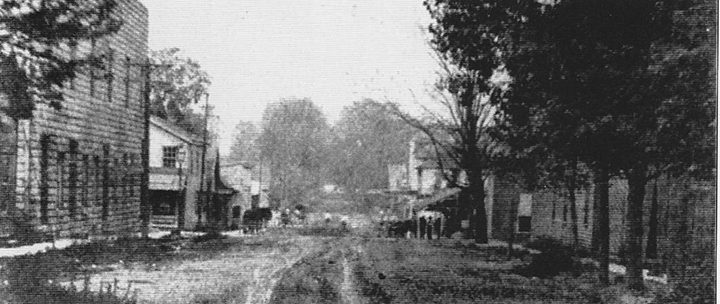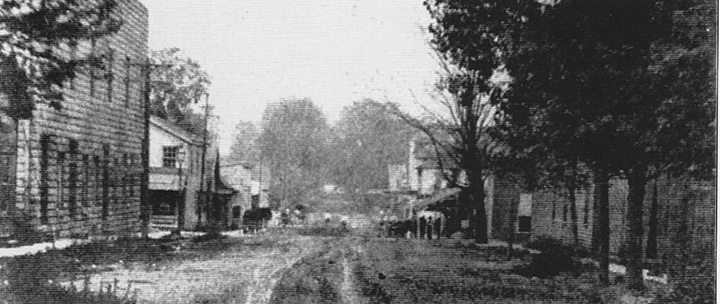
in 1908. (Courtesy of Phil Hinshaw)
By Terri Horvath
The streets of Carmel during its first 150 years were crude and filled with potholes. Most were just dirt and mud with a gravel blacktop for primary roads.
By 1910, residents realized the deplorable state of their roads and decided to make improvements. During that year, a downtown street was paved with brick. In 1922, East Main Street was paved with concrete. West Main Street was paved in 1924.
The trend in road improvements in U.S. communities coincided with the growing popularity of the automobile. People wanted an affordable car, but they also needed good roads to drive it on.
In 1909, there were 2.2 million miles of road in the U.S. Only about 190,000 miles were surfaced. The majority of surfaced area was in major urban areas, which accommodated automotive traffic. Most country roads, however, were simply dirt. Rain quickly turned these roads into thigh-deep mud ruts, making automotive travel extremely difficult. Many motorists had to enlist the aid of a nearby horse team to extract them from the quagmire.
The nation needed good roads, particularly for automotive travel to expand beyond being a fad for the rich. Intrepid explorers and innovators joined in the Good Roads Movement, which turned local advocacy into a national political campaign. Organizations developed such cross-county projects as the coast-to-coast, east–west Lincoln Highway in 1913, which runs across the northern part of Indiana.





